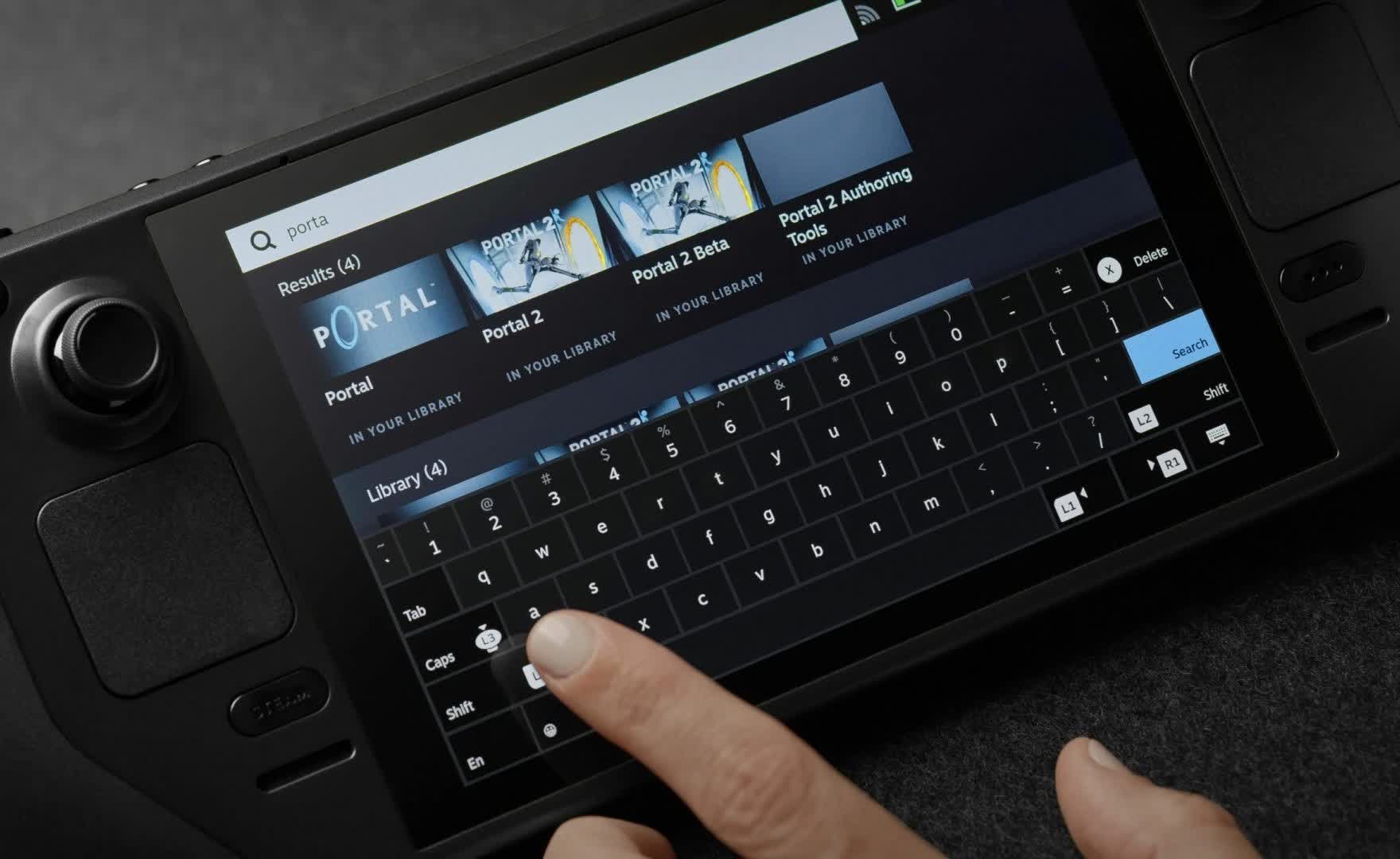In brief: This week valve posted a short video showing a partial teardown of its upcoming Steam Deck handheld PC. It mostly just shows how to replace a few parts if absolutely needed, but Valve also spends much of the video explaining why users shouldn't take the machine apart, or why at the very least, it should be left to professionals.
Valve is known to champion the open nature of PC gaming, and this video is no exception even though the Steam Deck is a device the company designed and built in a specific way. The beginning of the video explains that Valve thinks anyone who buys a Steam Deck should be free to do what they want with it, while strongly recommending they don't open it.
"Even though it's your PC, or will be once you've received your Steam Deck, and you have every right to open it up and do what you want, we at Valve really don't recommend that you ever open it up." the video says. "The Steam Deck is a very tightly designed system, and the parts are chosen carefully for this product with its specific construction, so they aren't really designed to be user-swappable."
Probably the most significant risk Valve points out is the battery. If damaged, it could potentially explode later on, which could even be life-threatening.
"So be forewarned and leave this kind of thing to professionals," the video stresses.

It then goes on to suggest that anyone who does take apart a Steam Deck should disconnect the battery before touching anything inside it (it's generally a good idea to disconnect the power source of any computer system while digging around inside it).
Valve says opening up the Steam Deck even once will permanently reduce its fall resistance. If you do want to open it up, though, the video confirms the screws on the back of the unit are self-tapping screws embedded in plastic bosses. They can be screwed on and off just fine but strip easily.
Valve created the teardown video to specifically show how to remove and potentially replace the thumbsticks and the SSD. All Steam Deck models use M.2 connectors for their storage, even the 64GB non-SSD model. Again, Valve doesn't recommend doing so because the thumbsticks are custom and the company specifically chose the Steam Deck's SSD for a few reasons.
A different SSD may have additional power consumption and heat output which could adversely affect the battery. Because of its location, a differing SSD could also mess with the Steam Deck's wireless capabilities and the motherboard. Valve recommends using an SD card to expand the Steam Deck's storage, and it confirmed in July that games could boot off an SD card.
In the video, Valve also confirms that it'll announce a source for getting replacement Steam Deck parts "in the coming months," including the thumbsticks and SSD. The final retail model will have some differences from what's shown in the video.